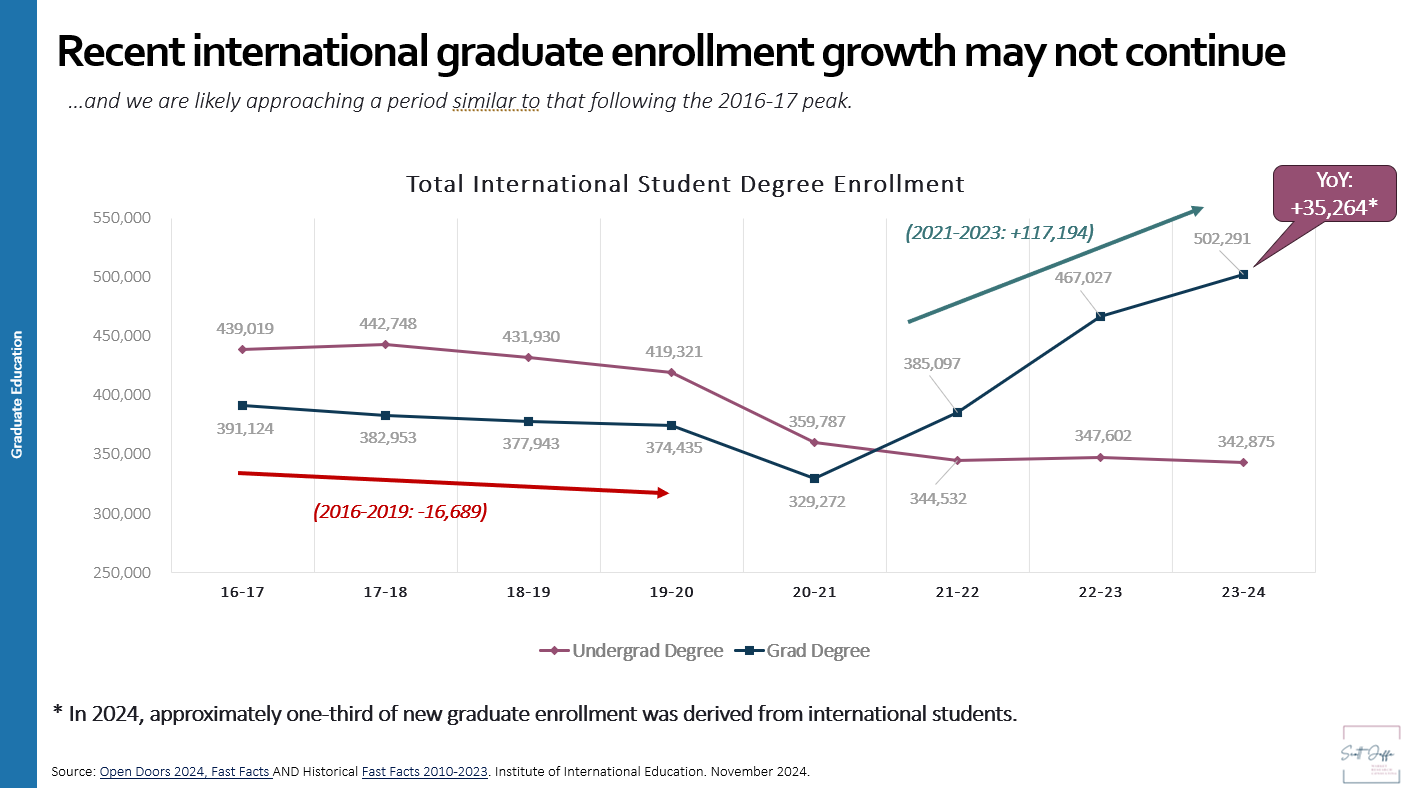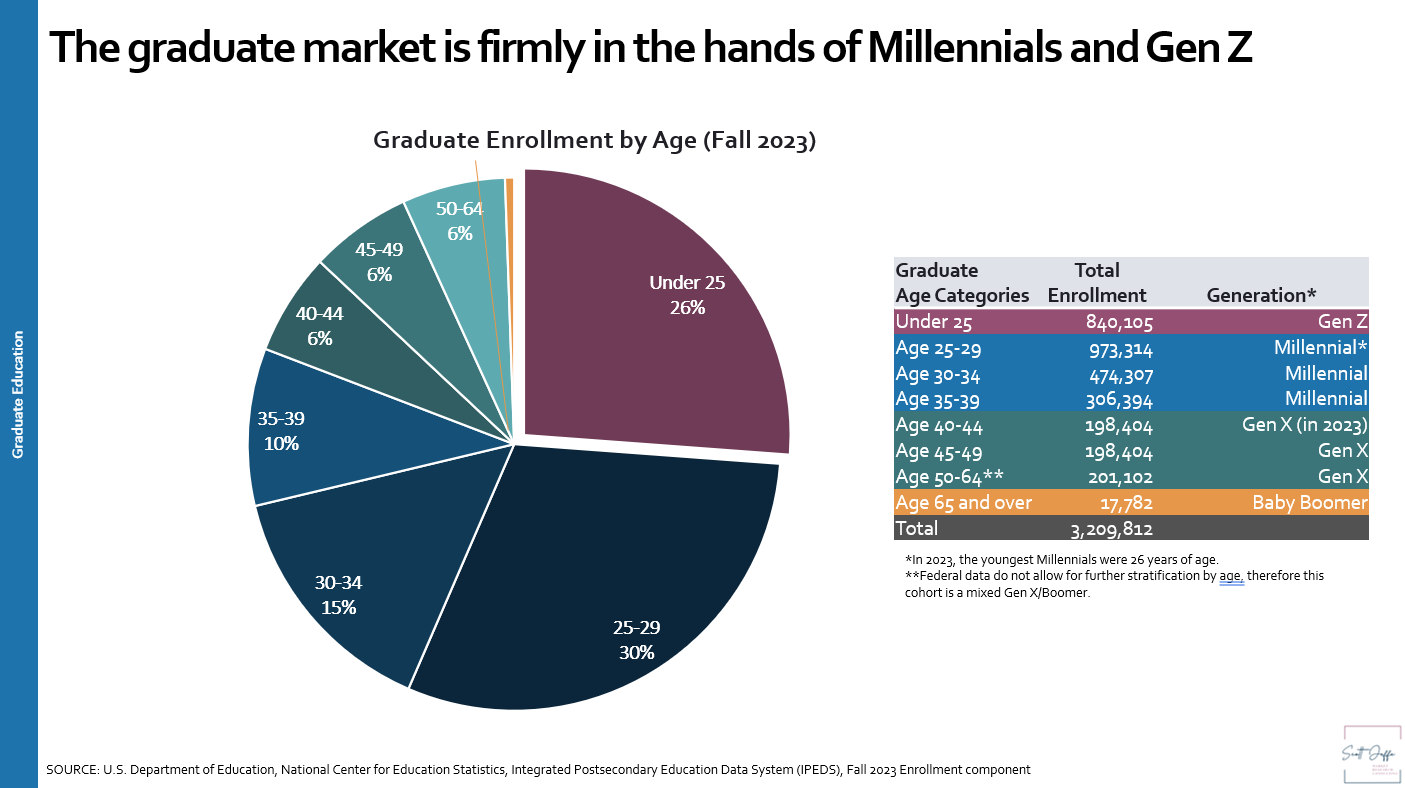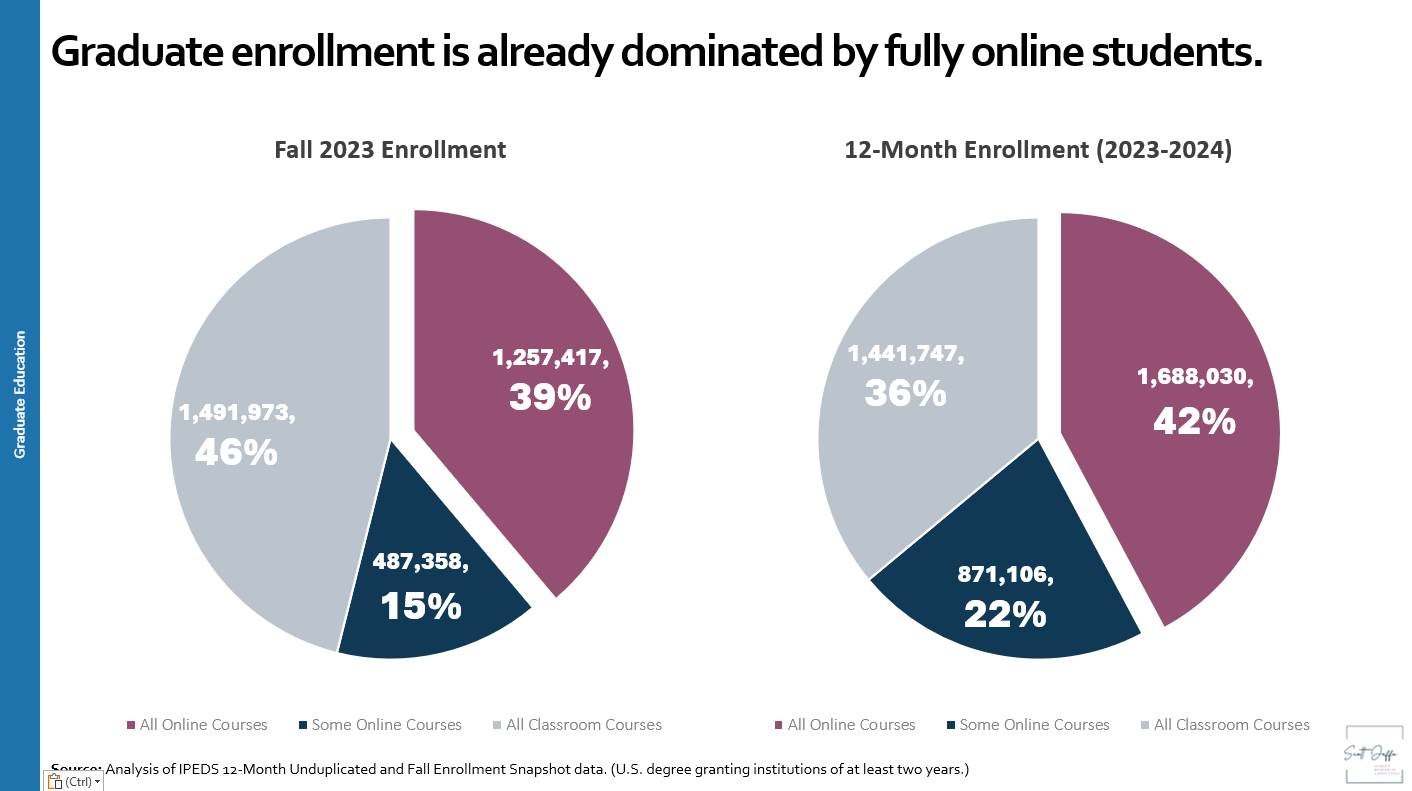
Four Key Challenges Facing Graduate Enrollment in 2025 and Beyond
I was pleased to be asked by RNL to continue to lead the research and writing of their latest 2025 Graduate Student Recruitment Report, now as an external consultant. The long partnership with the brilliant research and marketing staff resulted in an excellent and insightful report that I am pleased to base this blog – and a series to follow.
Graduate education is simultaneously at the point of its greatest importance and its greatest threat. Graduate enrollment has reliably fueled institutional growth (and/or overall health) for the last decade, and just as the first of two demographic shifts begin to impact undergraduate enrollment (in Fall 2026) four key challenges have been brewing – and these four don’t even include the challenges associated with the elimination of the GradPlus loan program and other acts perpetrated by the federal government.
As colleges and universities plan for the coming years, four forces in particular are reshaping the graduate market—and they demand both strategic foresight and agility.
1. International Student Decline
Between 2021 and 2024, international graduate enrollment at U.S. colleges and universities surged by more than 117,000 students, swiftly erasing the pandemic-era downturn. Yet that momentum is showing signs of faltering. A June 2025 report from NAFSA projected a potential decline of as many as 130,000 international students—most of them graduate students—with an estimated $7 billion impact on the U.S. economy.
While early Fall 2025 enrollment data may suggest that the situation is less dire than feared, even optimistic analyses describe a “flat” international market. That’s concerning at a time when international students have become central to institutional growth strategies.

Trends in undergraduate and graduate international student enrollment at U.S. institutions 2010-2024.
Conclusion: As demographic shifts reduce the domestic undergraduate pipeline beginning in 2026, graduate programs can no longer rely on international growth alone. Schools must strengthen their domestic recruitment efforts—especially those historically dependent on international students. To succeed, they’ll need to better understand and engage local learners, whose motivations and expectations often differ dramatically from their international counterparts.
2. Changing Student Expectations Across Generations
In fall 2023, Millennials represented 55% of graduate students, Gen Z 26%, and Gen X and older students the remaining 19%. By early 2027, these proportions will change dramatically: Gen Z will make up more than half of all graduate students, while Millennials will fall to about one-third and Gen X to roughly 10%.
This shift represents more than just age differences—it signals a transformation in values and decision-making. Millennials have redefined graduate education through their demand for personalized communication, fast responses, and technology-enhanced learning. Yet they also retain a deep belief in the value of higher education. Gen Z, by contrast, is more skeptical. They see multiple pathways to career advancement and question whether traditional degrees are worth the investment.

IPEDs data showing the breakout of the U.S. graduate student population by (approximate) generation.
Conclusion: To appeal to Gen Z, institutions must make a stronger case for the ROI of graduate study and demonstrate tangible value. Policies, communication, and programming must evolve to reflect a truly student-first philosophy that meets Gen Z where they are—digitally, financially, and philosophically.
3. The Rapid Shift to Online Formats
Fall 2023 IPEDS data showed that 46% of graduate students were enrolled in classroom-based programs and 39% in fully online study. But those numbers only tell part of the story. When viewed over the entire 2023-24 academic year, fully online graduate students outnumbered classroom-based peers by more than 200,000—a striking reversal.
Online learners also tend to enroll year-round rather than following traditional fall cycles, underscoring how outdated “snapshot” enrollment data can be.

Conclusion: Institutions looking to grow graduate enrollment must ensure that high-demand programs are available in fully online formats. Rather than seeing online and classroom delivery as competitors, schools should view them as complementary experiences. Collaboration between formats eliminates fears of “cannibalization” and broadens the reach of each program. Designing courses flexibly from the outset ensures that all formats deliver a consistent, high-quality student experience.
4. More Choices Than Ever for Graduate Students
Over the past 15 years, the number of master’s programs in the United States has skyrocketed. A 2024 study by higher-education researcher Robert Kelchen documented nearly 14,000 new master’s degree offerings between 2005 and 2021—bringing the total to 33,546 programs. That’s roughly one program for every 62 master’s students, an extraordinary level of competition.
Students now have unprecedented freedom to choose not just what and where to study, but how.
Conclusion: With such abundant options, institutions face enormous pressure to align program design, delivery, and marketing with student expectations. Learners will not enroll in programs that fail to meet their needs for flexibility, relevance, and convenience. Schools must invest strategically in programs that reflect true market demand—and position them effectively to stand out in an increasingly crowded field.
The Path Forward
Graduate education remains a vital engine for institutional growth and personal advancement, but sustaining it will require adaptability. Institutions that listen closely to shifting student preferences, innovate in delivery, and communicate clear value will be best positioned to thrive in the evolving graduate marketplace.
Check out my services that can help you succeed: Smart Scan: Program Demand and Opportunity Analysis; Distinctive Edge: Competitor Differentiation Blueprint; and Student Pulse: Audience Alignment Study.